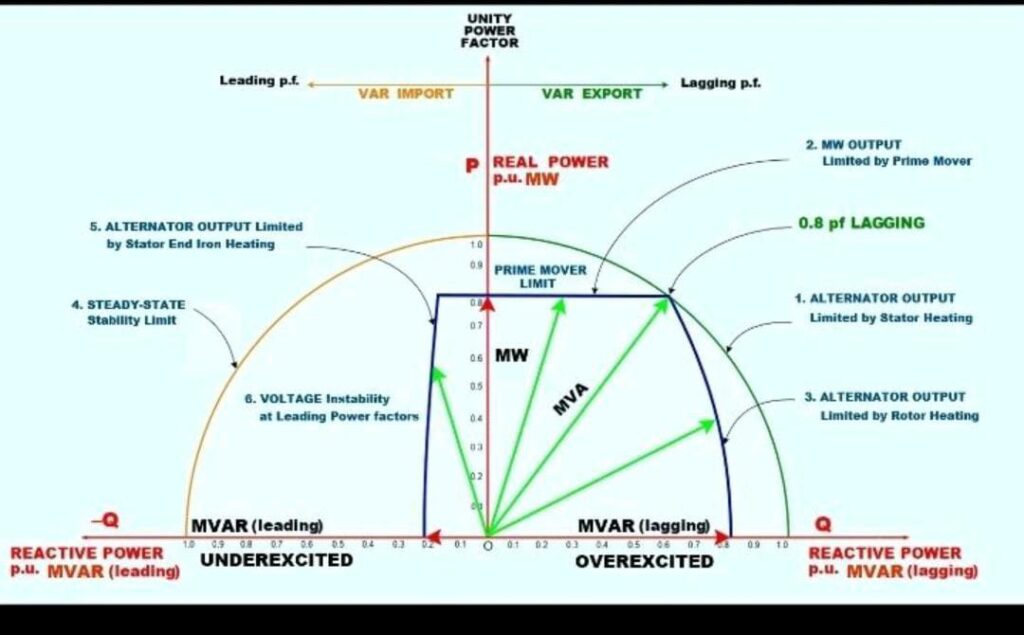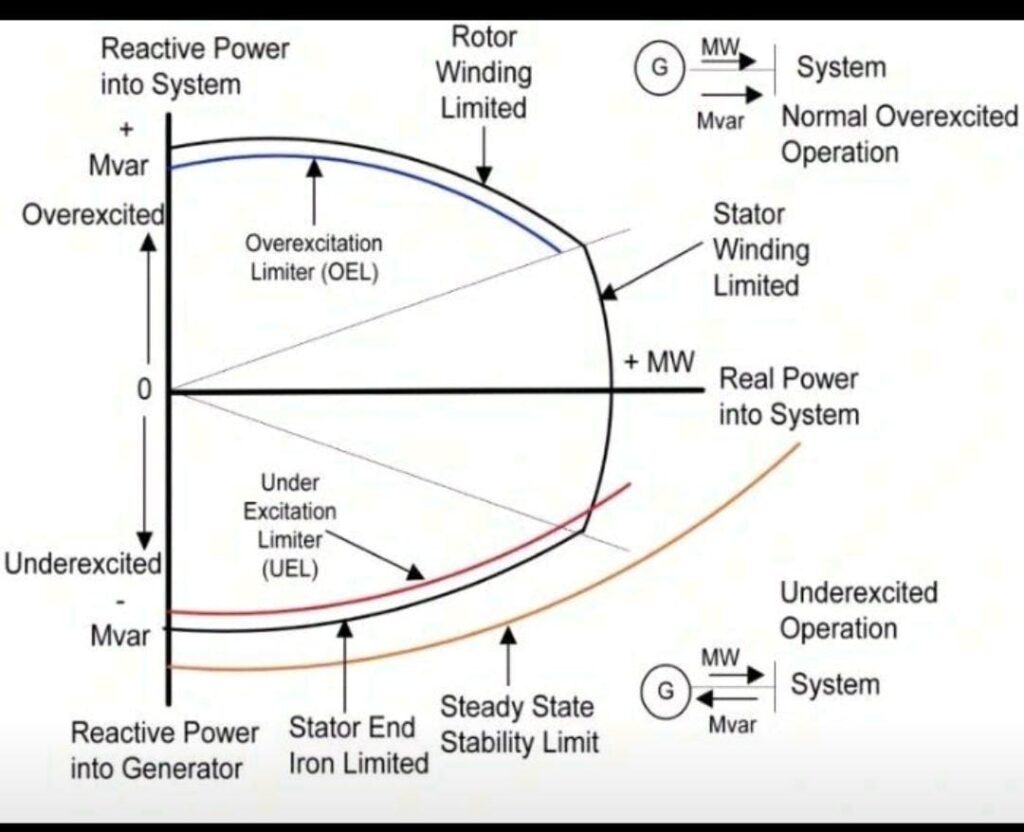Understanding the Generator Capability Curve:
A Key Tool for Power System Stability
The Generator Capability Curve, also known as the P-Q Diagram, is an essential tool for ensuring the safe and efficient operation of synchronous generators in power systems.
This curve represents the operational limits ofa generator, illustrating the relationship between active power (P) and reactive power (Q) while considering critical factors like thermal limits, stator current, and field current.

Key Components of the Capability Curve:
Active Power (P) and Reactive Power (Q):
These parameters define the generator’s output, with P representing real power in megawatts (MW) and Q representing reactive power in megavolt-amperes reactive (MVAR).
Stator and Field Current Limits: These limits prevent overheating and potential damage to the generator’s components by ensuring the current remains within safe thresholds.
Thermal and Stability Limits: These boundaries ensure that the generator operates within its thermal capacity and maintains synchronism with the grid, avoiding conditions that could lead to system instability or blackouts.
Overexcited and Under excited Regions: These regions describe the generator’s ability to either supply or absorb reactive power, which is crucial for voltage controlling and overall system stability.
Practical Applications:The Generator Capability Curve is instrumental for grid operators and engineers, providing a clear framework for optimizing generator performance. It helps in managing voltage levels, setting protective relays, and ensuring that generators operate within their safe limits.
By adhering to the constraints outlined in the capability curve, power systems can maintain reliability, prevent equipment damage, and support overall grid stability.
Understanding and utilizing the Generator Capability curve is vital for anyone involved in power system operations.
It not only safeguards equipment but also plays a crucial role in maintaining the stability and reliability of the power grid. As the demand for electricity continues to grow, the importance of these tools in managing and optimizing power generation cannot be overstated.

